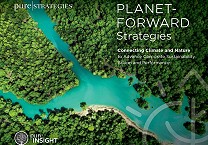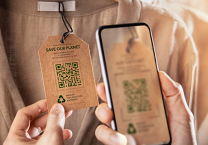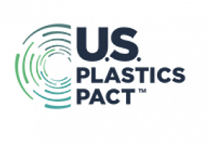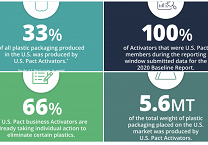
Sustainable packaging tracking: Shifting from pain to progress and purpose
by Cheryl Baldwin, PH.D.
14 June 2023
Sustainable packaging is at an inflection point, and data is quickly becoming necessary to support progress. Customer and investor pressure is building and companies that haven’t measured their sustainable packaging status will need to start. Plus, even for businesses that already track sustainable packaging metrics, the expectations are higher, and more is at stake.
The process of collecting and reviewing packaging data can be challenging, if not painful. Many companies don’t have this data organized ─ if they have the data at all. But the time has come for companies to get their houses in order. Customers and investors may not yet require this data, but they will soon, along with regulators.
Packaging has become a focus of new and emerging regulations, such as Extended Producer Responsibility (EPR) laws which shift the costs of managing used packaging from municipalities to the “producers” of the packaging. In the U.S., four states (California, Colorado, Maine, and Oregon) have passed such bills that mandate companies to pay fees for the type of packaging used, beginning as soon as 2025. Plus, states are establishing recycled content requirements and “materials of concern” bans. Companies need to know more about the packaging they use and to prepare for reporting on the data on their packaging.
For example, companies will need to know how much of each material is used in their product packaging, as well as how much of the packaging is compatible with recycling systems. They will need to learn all of the intentionally used materials in the package. Most companies don’t know this. So, how can this information be collected, organized, and evaluated effectively?
Understand what to measure
It is important first to identify what should be tracked. Consider regulatory requirements and also customer, investor, non-profit, and internal expectations for guidance. Tools like the FMI Sustainable Packaging Assessment Guide also list several commonly used metrics to consider, such as the weight and percent of each material and characteristics of the materials, such as the percentage of verified responsibly-sourced fiber.
To comply with EPR laws, businesses will be required to provide data about their packaging and to pay applicable fees. The mandatory data may include the materials used and their weights, amounts of recycled content, types of packaging, and information on whether the package is reusable/recyclable/compostable (per the definitions used by the program). Companies will begin paying fees based on this data as soon as 2025 in key states in the U.S., such as Oregon and Colorado.
Some companies have experience with EPR laws from Europe and even in the U.S. with beverage deposit programs and related laws. For example, the state of California’s beverage container law requires data on virgin and recycled plastic content.
Plastics-focused metrics and criteria are also included in voluntary efforts, such as the Ellen MacArthur Foundation’s Global Commitment on plastics and the U.S. Plastics Pact’s Problematic and Unnecessary Materials List. CDP’s new disclosure is also expected to include reporting on plastic usage by weight and a portion from post-consumer, post-industrial, and virgin plastics.
Broader metrics are expected from investors, such as the standards defined by the Sustainability Accounting Standards Board. The standards for household, personal care and processed foods products include quantitative metrics for the total weight of packaging, the percentage made from recycled and/or renewable materials, and the percentage that is recyclable, reusable, and/or compostable.
Move to progress and purpose
The hardest part of sustainable packaging tracking is collecting and organizing packaging data. It is not uncommon that businesses do not have this data, and they need to reach out to suppliers for it. As a result, it is important to begin this effort soon to be prepared for forthcoming data requirements.
The FMI guide includes best practices on how to survey suppliers and provides a standard set of questions. There is value in not reinventing the wheel with supplier surveys. It saves time in creating supplier assessments and, on the other end, it helps suppliers to receive the same questions across their customers versus one-off questions from many customers. So, companies should look to using existing tools for data collection, such as the FMI assessment questions.
Also, companies should consider how this process will be repeated in future years or for additional purposes, such as regulatory requirements, voluntary reporting, and responding to customer expectations. It may be best to seek out ways to automate the data requests and updates and to create a robust documentation process to support future packaging audits.
Does all this work pay off? Yes. Besides complying with laws and meeting customer requests, when companies establish their sustainable packaging baseline, the results are often eye-opening. Low-hanging fruit opportunities are typically revealed, allowing for quick progress. Collecting this data also unlocks opportunities, such as using the How2Recycle™ label and can lead to cross-cutting changes, such as where one design adjustment improves multiple packages. Further, the data can help to inform an action plan for additional progress.
In my experience, when businesses take this on for the first time, they see not only the opportunity for progress, but also a path for a larger purpose. This is because the process usually uncovers additional rationale for upgrading internal data management, innovation, and competitive advantages—all led by sustainability. Broader internal engagement in sustainability can also spur interest in external collaboration and engagement. For example, companies may choose to align with peer commitments, such as the U.S. Plastics Pact, or to support cross-industry projects, including The Recycling Partnership, or to advocate global policy change by supporting the Global Treaty on Plastic Pollution.
With regulatory demands looming, and additional stakeholder pressure mounting, the business case is strong for building an effective, sustainable packaging tracking program. It is best not to wait and to use this opportunity to build a robust process that can help your business move from viewing data collection as a pain to one that enables progress and inspires purpose.
This article originally appeared in GreenBiz on June 13, 2023.
Image courtesy of Shutterstock.
Written by Cheryl Baldwin, PH.D.
Cheryl Baldwin, Ph.D., is a Vice President of Sustainability Consulting for Pure Strategies where she partners with corporate clients to develop and execute sustainability strategies to improve performance across retail, food and agriculture, home and personal care, and cosmetics industries. She also leads the firms’ global market research to generate new insights to accelerate business transformation.
Cheryl’s recent projects include helping develop sustainability goals for TAZO, create a sustainable packaging strategy and implementation tools for Walmart, and facilitate the development and implementation of a sustainable chemistry program for Ahold Delhaize USA.
Cheryl authored Pure Strategies’ market research reports, Connecting to the Farm, Reaching the New Corporate Frontier, Advancing on the Path to Product Sustainability, and other reports. She wrote the book, The 10 Principles of Food Industry Sustainability and is the lead author/editor for two additional books on sustainability, Greening Food and Beverage Services and Sustainability in the Food Industry and holds U.S. and international patents.
Prior to Pure Strategies, Cheryl led the life cycle research and sustainability standard program for the non-profit ecolabel organization Green Seal. Cheryl also worked in Research and Development for Kraft Foods, Inc. where she was involved in all phases of R&D from novel ingredient development to global product commercialization. Cheryl holds a Ph.D. and M.S. from Cornell University and a B.S. from the University of Illinois, all in Food Science.
Cheryl has been named one of the Top 50 Women Leaders of DC for the second consecutive year, based on a methodical review of women executives and leaders across the area. She was identified for her career track record, including her leadership position at Pure Strategies. The recognition came from Women We Admire (WWA), a membership organization of over 1,200 of the most accomplished women leaders in business, law, consulting, education, non-profit and other sectors. based on a methodical review of women executives and leaders across the area. She was identified for her career track record, including her leadership position at Pure Strategies. The recognition came from Women We Admire (WWA), a membership organization of over 1,200 of the most accomplished women leaders in business, law, consulting, education, non-profit and other sectors.












